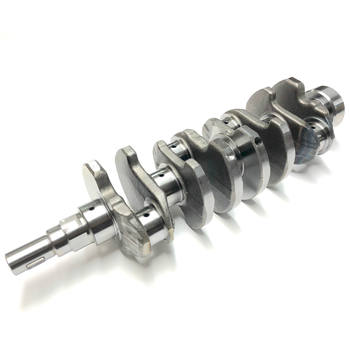The Unseen Enemy: Crankshaft Fatigue
Operating in the harshest environments, engines need to withstand tremendous forces. Crankshaft fatigue, the silent enemy, can lead to catastrophic failures. To ensure reliability under extreme conditions, crankshaft fatigue testing is essential.
Why Does This Matter?
In my experience, understanding the importance of crankshaft fatigue testing can mean the difference between a reliable engine and a costly failure. Let's explore the key aspects of this testing method and its practical applications.
The Science Behind Crankshaft Fatigue Testing
Crankshaft fatigue testing aims to replicate the stress an engine undergoes during its lifecycle. By applying cyclic loads, engineers can assess the material's endurance limit, the point beyond which fatigue damage occurs.
The Role of Extreme Load Conditions
Interestingly enough, not all loads are created equal. Extreme load conditions, such as sudden acceleration or deceleration, can cause higher stress levels. Engineers must account for these scenarios to ensure engine reliability.
Methods of Crankshaft Fatigue Testing
Several methods are employed to test crankshaft fatigue, including:
Best Practices in Crankshaft Fatigue Testing
To ensure accurate results, follow these best practices:
- Use realistic load profiles based on actual operating conditions.
- Employ advanced data acquisition systems for accurate measurement and analysis.
- Perform regular maintenance and calibration on testing equipment.
Practical Applications and Case Studies
Many industries rely on crankshaft fatigue testing, including automotive, aerospace, and heavy machinery. For instance, in the automotive sector, crankshaft fatigue testing helps optimize engine design and improve fuel efficiency.
What Can You Do?
As an engineer or decision-maker, consider these actionable tips:
- Collaborate with material scientists to select optimal crankshaft materials.
- Invest in advanced fatigue testing equipment and software.
- Develop a comprehensive fatigue testing protocol based on industry best practices.
The Bottom Line
In conclusion, crankshaft fatigue testing plays a crucial role in ensuring engine reliability under extreme conditions. By understanding the science behind it and following best practices, you can make informed decisions and optimize your engine designs for long-lasting performance.
So, the next time you're faced with a challenging engine project, remember: a little fatigue testing goes a long way in preventing catastrophic failures and ensuring reliability.




